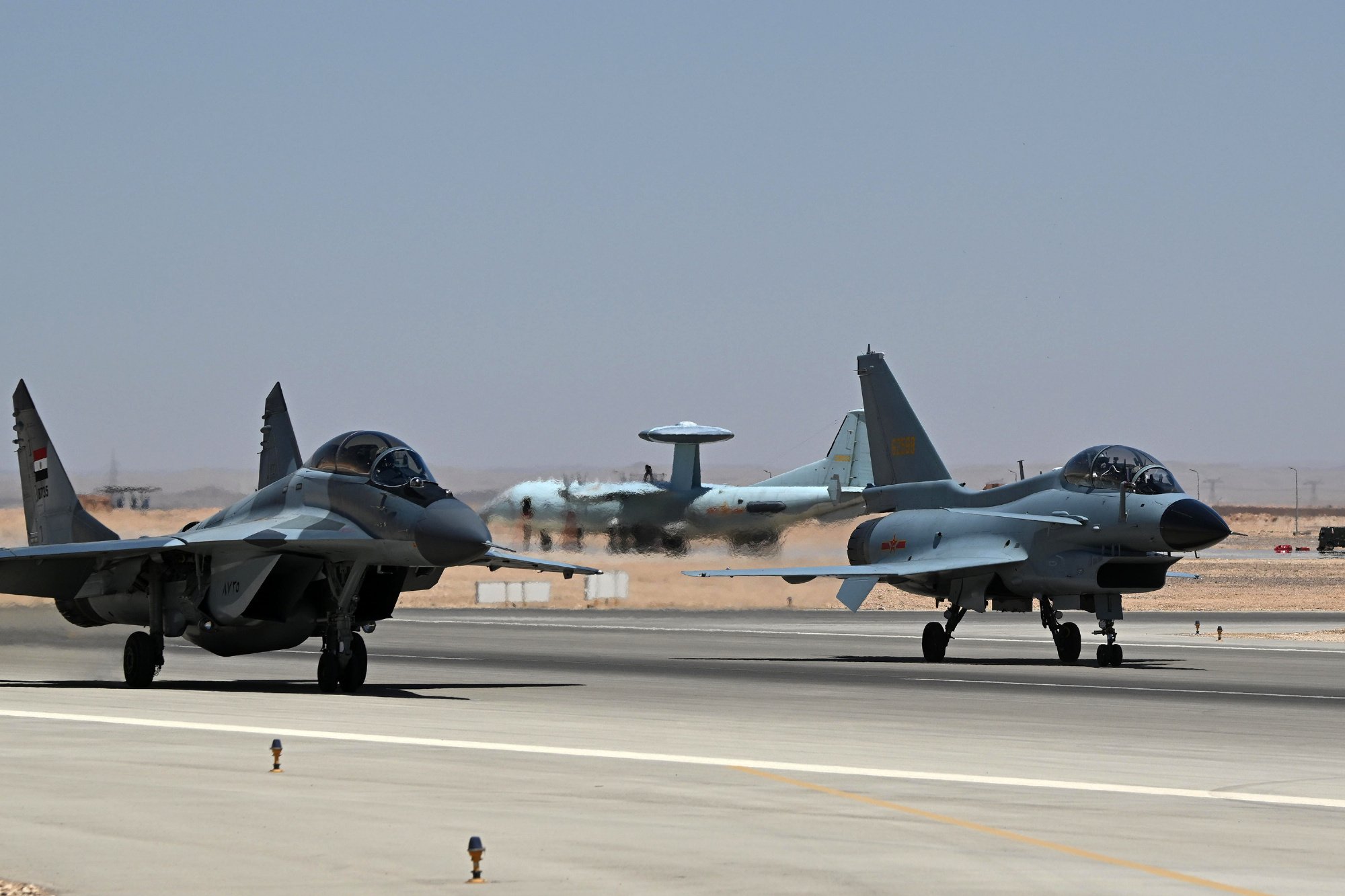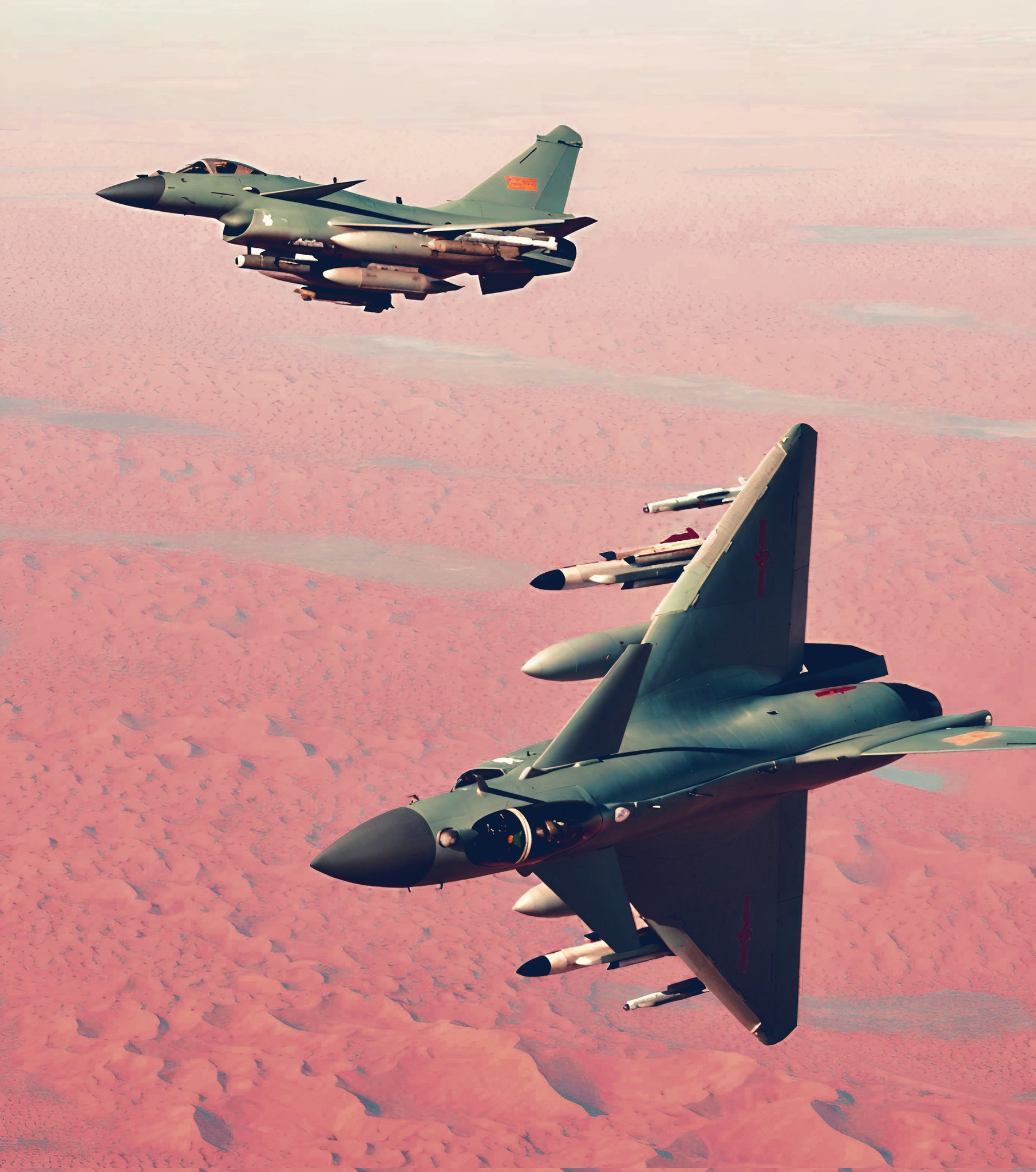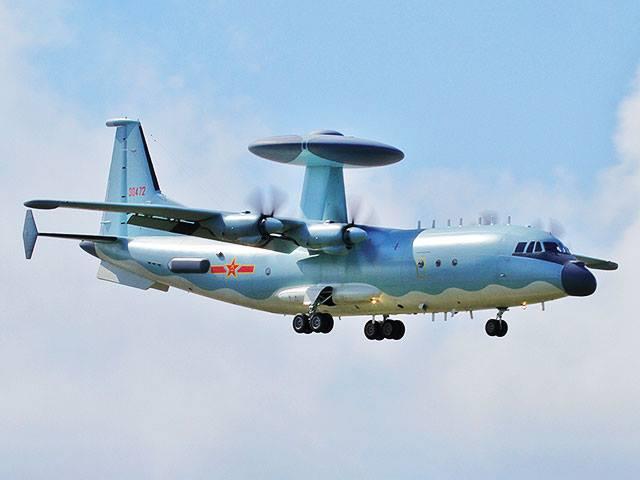Beijing-Cairo Alliance Under Fire: Chinese KJ-500 AEW&C Allegedly Used to Probe Israel’s Air Defence Readiness
Such alleged use of the KJ-500’s surveillance capabilities by Egypt, in coordination with China, to test or even penetrate Israel’s air defence thresholds, has been deemed an unprecedented intelligence provocation by Israeli commentators, further fuelling anxieties over Beijing’s deepening security ties in the region.
(DEFENCE SECURITY ASIA) – A growing storm of allegations from Israeli media accuses Egypt of leveraging China’s advanced KJ-500 airborne early warning and control (AEW&C) aircraft during recent bilateral air exercises to covertly monitor Israeli Defence Forces (IDF) deployments, raising alarm bells in Tel Aviv over escalating regional power dynamics.
According to Israeli reports, Chinese J-10C multirole fighter aircraft, deployed for the joint “Eagle of Civilization 2025” drills, were observed conducting provocative flight patterns along the sensitive border corridor near the Sinai Peninsula, a move that activated Israel’s sophisticated early warning radar systems.
In a further escalation, the KJ-500 AEW&C aircraft—operating in proximity to the Israeli frontier—was allegedly utilized by Egyptian defence authorities to record the scramble response time of Israeli fighter interceptors, a critical indicator of IDF readiness and tactical latency.
Such alleged use of the KJ-500’s surveillance capabilities by Egypt, in coordination with China, to test or even penetrate Israel’s air defence thresholds, has been deemed an unprecedented intelligence provocation by Israeli commentators, further fuelling anxieties over Beijing’s deepening security ties in the region.
The Eagle of Civilization 2025 exercise, which took place in mid-to-late April, marks the first large-scale air combat training between the Egyptian Air Force and the People’s Liberation Army Air Force (PLAAF), signalling a new axis of strategic military cooperation beyond symbolic engagement.
Israeli media outlets claim that Egypt’s manoeuvre—facilitated by China—constitutes a breach of the 1979 Egypt-Israel Peace Treaty, an agreement that has underpinned strategic stability between the two historic adversaries for over four decades.
The criticism has extended beyond military circles, with Jewish media expressing disappointment at the apparent inaction of the United States, Israel’s principal ally and a key guarantor of the Camp David framework, in addressing what is perceived as a serious violation.

In response, certain voices within the Israeli strategic community have called for retaliatory measures, including the reassessment of Chinese economic interests at Israel’s Haifa port, a site of growing concern due to its strategic proximity to sensitive naval infrastructure.
Last week, Maariv, a prominent Israeli publication, reported that PLAAF J-10C fighters flew alarmingly close to Israeli airspace during the exercise, further intensifying Israeli defence sector concerns about Egypt’s evolving military posture.
“The report alleged that Chinese combat aircraft involved in the joint military drills with the Egyptian Air Force flew at an unusually close distance to the Israeli border, describing the situation as a troubling development.”
The paper also noted that the bilateral air drills featured a significant number of next-generation platforms, including multirole fighters, aerial tankers, and electronic warfare assets, conducted against the backdrop of an increasingly volatile regional landscape.
Maariv underscored that this training operation occurred in parallel with heightened Israeli unease over Egypt’s recent deployment of military assets, including heavy equipment and air defence systems, into the Sinai—a region historically subjected to demilitarization stipulations under the 1979 accord.
Israeli defence analysts have grown increasingly vocal in warning that Egypt’s growing defence alignment with China—including speculated interest in Chinese-origin precision-strike systems and integrated air defences—could tilt the strategic balance and undermine Israel’s long-cherished qualitative military edge.

In a striking pre-retirement interview in March, former Chief of Staff of the Israel Defense Forces (IDF), Lt. Gen. Herzi Halevi, voiced serious concerns shared across Israel’s security establishment regarding the growing scale and sophistication of Egypt’s military machine.
“We are very concerned about this,” Halevi warned on Channel 14. “Egypt possesses a large and formidable military force, equipped with modern combat systems, advanced aircraft, submarines, warships, and tanks, along with a vast infantry force.”
The Eagle of Civilization 2025 exercise also marked a milestone in Chinese power projection, with Beijing for the first time deploying its KJ-500 AEW&C aircraft beyond its borders to participate in live-fire joint aerial operations with a non-allied Middle Eastern power.
China’s Ministry of Defence confirmed that the exercise—held at Egypt’s Wadi Abu Rish Air Base—involved the deployment of J-10C fighters, YU-20 aerial refueling tankers, and the KJ-500 AEW&C platform, describing the drills as a landmark in bilateral military diplomacy.
“This is the first joint military exercise between the two nations, and it plays an important role in advancing pragmatic cooperation and bolstering mutual trust and friendship,” the ministry stated, framing the manoeuvre as a reflection of Beijing’s broader strategy to cultivate influence in the Arab world.
The KJ-500, which underpins much of this operational intrigue, is a third-generation AEW&C system developed by Shaanxi Aircraft Corporation, based on the Y-9 transport airframe, and is a strategic cornerstone of China’s evolving network-centric warfare doctrine.

It employs a non-rotating tri-panel Active Electronically Scanned Array (AESA) radar housed in a fixed dorsal radome, providing uninterrupted 360-degree situational awareness and target tracking, particularly adept at detecting stealth platforms and hypersonic threats.
Its radar can simultaneously track between 60 to 100 airborne targets out to a radius of 470 kilometers, a range that encompasses much of Israel’s core territory when positioned in northern Sinai or southern Egypt.
Technological enhancements to the KJ-500, including integration with China’s BeiDou satellite navigation system and potential fusion with electromagnetic detection from drone swarms and commercial satellite constellations like Starlink, have significantly bolstered its capability to detect low-RCS (Radar Cross-Section) targets.
Compact in design—measuring 34 meters in length with a 38-meter wingspan—the KJ-500 offers operational flexibility from dispersed or smaller airfields, compared to its larger predecessor, the KJ-2000.
Variants such as the KJ-500H for naval operations and KJ-500A with in-flight refueling capability further expand its operational versatility, enabling extended missions of up to 12 hours and ranges exceeding 5,700 kilometers.
Powered by four WJ-6C turboprop engines, each rated at 3,800 kW and fitted with six-blade composite propellers, the aircraft can cruise at 550 km/h, ideal for long-endurance patrols across maritime and terrestrial theatres.


Its robust short take-off and landing (STOL) characteristics, combined with high system integration and real-time battlefield data fusion, make it indispensable for high-tempo aerial operations and joint force coordination.
Equipped with advanced electronic support measures (ESM), missile approach warning systems (MAWS), and electronic intelligence (ELINT) sensors, the KJ-500 is engineered to survive contested electromagnetic environments while performing command and control (C2) functions.
China is believed to have fielded over 50 KJ-500 aircraft across the PLAAF and PLAN as of 2024, replacing older AEW&C assets and standardizing the platform for both strategic and regional roles.
According to U.S. Pacific Air Forces Commander Gen. Kenneth Wilsbach, the KJ-500 significantly enhances China’s long-range air-to-air engagement capabilities—particularly in coordination with PLAAF platforms like the J-20 and long-range PL-15 missiles—effectively broadening China’s anti-access/area-denial (A2/AD) envelope.
Its deployment to forward-operating locations such as Changzhou and the heavily fortified Fiery Cross Reef in the South China Sea underscores its role in regional power projection and maritime domain awareness.
Technologically, the KJ-500 represents a generational leap over legacy systems such as the U.S. E-3C AWACS and the E-2C Hawkeye, leveraging phased-array radar architecture for higher refresh rates, electronic agility, and resistance to jamming.
The integration of this potent AEW&C platform into joint exercises like Eagle of Civilization 2025 signals not only a maturing Sino-Egyptian defence relationship but also a broader geopolitical shift as China deepens its strategic footprint in a region long dominated by Western alliances.
— DEFENCE SECURITY ASIA


